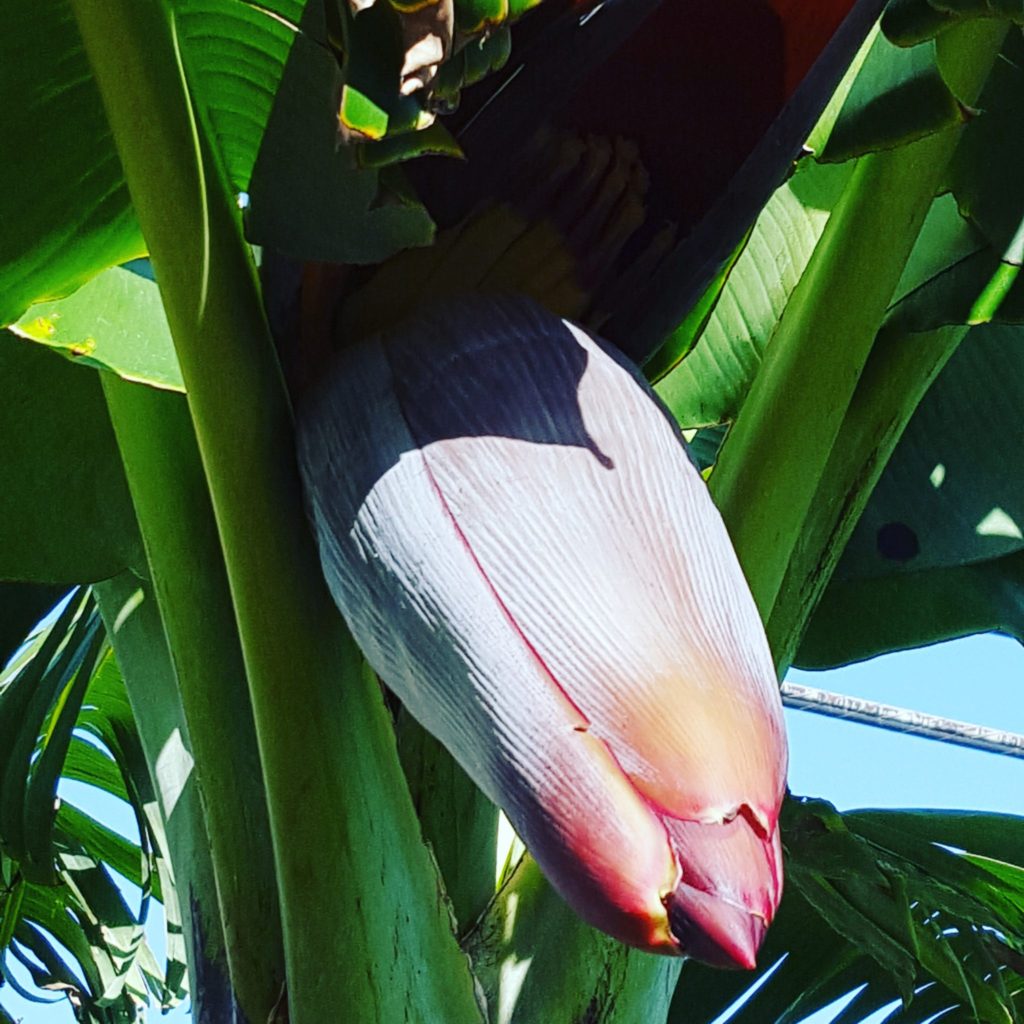Puso ng Saging

Musa Sapientum
Puso ng Saging or banana heart is the heart-shaped inflorescence of the blossom of the banana tree coming into fruit. The flowers or florets are covered by red-colored sheaths. It is best to pick before the bananas are formed because the whole heart would be tender when cooked and not too fibrous just like the bamboo shoots where you harvest young so it would be tender.
It is the main ingredient in our popular dish Kare-Kare (Filipinos from California use artichoke as a substitute, although it does not taste the same). Most Filipinos cook them by themselves adobo-style, with vinegar and garlic. Some cook them with coconut milk and hot chili peppers, just like the taro leaves.
Bananas plants are fast growers given the right conditions. It needs full sun and moist soil. The roots are shallow, so it needs constant watering. It would take about four months to start flowering. You can either wait until it forms fruit before cutting the heart or cut the heart as soon as it forms. Either way, you will need to cut down the whole tree entirely because it will die after the banana bears fruit. But not to worry because while you wait for the fruit to mature or ripen, the banana plant will form new shoots, like orchids having new “keikis.” Then you will have a continuous supply of bananas assuming you did your job to meet the requirements of a healthy banana plant.
There is a variety of the banana we call “saba” (Musa sapientum compressa) our cooking banana. In Costa Rica and other Latin countries, they have a variety called plantain. We use the ” saba ” to make the banana lumpia, by rolling the sliced banana in sugar and then wrapped with lumpia wrapper or spring roll wrapper. ( I am sure you can use the Phyllo dough for wrapping the bananas too.) And then the rolls are fried in hot oil for a sweet snack at coffee or merienda time. They can also be cooked dipped in batter like beignets, we call this maruyang saging, as morning or afternoon snacks. For the main courses, we use the cooking banana as an ingredient in the dish we call pochero or beef nilaga which literally translates as boiled beef soup bones (some call it “Bulalo”). In my place, during fiesta time, we always prepare a special dish called “Estofado.” One of the main ingredients is the saba or cooking banana. I think it came from Spanish cooking handed down to us by our grandparents. We are the only one who knows how to make them. One time I made it for my son Alex’s Birthday party and most of the guests were asking me about it. One of the guests even requested me to cook it for her next party. Well, that’s a different story. Meanwhile, people from other islands in the Philippines, especially the Visayas, boil the unripe or green banana until soft and then dip it in grated coconut with sugar. I know this because when I went to Kalibo, Aklan (part of the Visayan Islands) during a vacation, that’s how I saw them eat bananas.
When I was in elementary school, during recess, I always went to a nearby snack stand to buy boiled bananas or the refreshing snack of iced banana with caramel and cream.